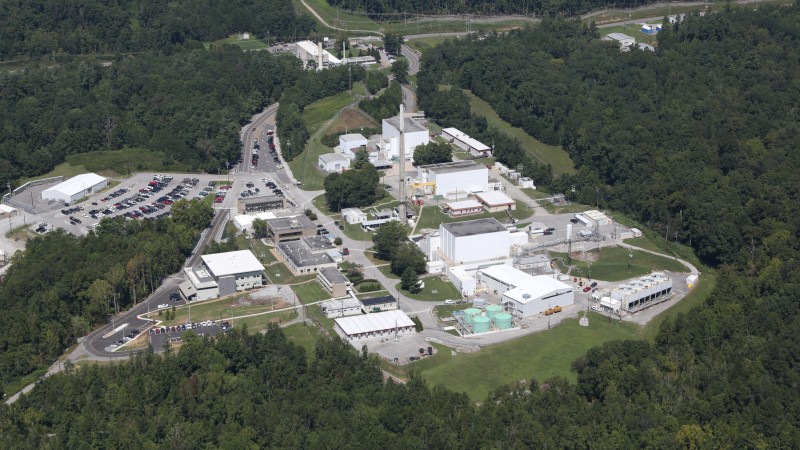The Department of Energy’s (DOE’s) Oak Ridge National Laboratory (ORNL) has resumed producing neutrons for research at the High Flux Isotope Reactor (HFIR) after completing facility improvements and significant upgrades to 10 of 12 neutron beamline instruments during the HFIR outage.
HFIR restarted Oct. 29, after a nearly year-long outage, and is now operating at full power.
Research Reactors Division Director Tim Powers called it “a wonderful achievement” that positions HFIR for the future.
"During the outage, in addition to all of the work conducted to enable the restart of normal operations of the reactor, significant facility improvements and significant upgrades to neutron scattering instruments were made. These upgrades will enhance the reliable and sustained operation of the facility and also the scientific impact of user experiments," said Neutron Sciences Associate Lab Director Paul Langan.
Teams at HFIR completed thousands of work activities, leading to a more robust neutron production environment and ensuring HFIR’s continued service as one of the world-leading neutron sources.
For decades, neutrons produced at HFIR have helped scientists make breakthroughs in physics, chemistry, materials science, engineering, biology, and other fields. HFIR’s instruments provide capabilities that enable discoveries leading to new and improved technologies for use in energy production, national security, healthcare, agriculture, computing, and a wide range of industrial processes.
“Our beamline teams are now commissioning those HFIR instruments that were upgraded and performing experiments with users on the instruments that are ready,” said Hans Christen, director of ORNL’s Neutron Scattering Division. “The upgrades will significantly enhance the scientific impact of user experiments. The teams completed an extensive list of upgrades on a very ambitious schedule and involving a large number of people.”
Designed to provide new and important scientific capabilities, HFIR instrument upgrades included more advanced beam delivery systems, enhanced sample environments, better optics, and improved data acquisition systems and detectors. Of the 10 instrument projects, five were considered major upgrades. (See instrument upgrades story.)
In parallel to the instrument improvements, a significant amount of facility work was performed during the outage that included upgrades to the coolant supply pipes as well as maintenance on control rod and extension tube assemblies, upgrades to the reactor pool heating system, installation of concrete electrical duct banks for future improvements, and repair or replacement of numerous valves, actuators, sensors, electrical switches, filters, and cables — as well as inspections of hundreds of existing systems to ensure proper operation.
“The HFIR teams are happy to have successfully accomplished these complex upgrades,” Christen said. “It would not have been possible without valuable input from our users and the dedication and hard work of hundreds of ORNL staff and subcontractors.”
HFIR provides one of the highest rates of continuous beam neutrons of any research reactor in the world. The facility is typically used by hundreds of researchers each year who conduct neutron scattering experiments with the goal of understanding and manipulating the fundamental properties of matter.
The HFIR upgrades were supported by DOE’s Office of Science.
HFIR and SNS are DOE Office of Science User Facilities. ORNL is managed by UT-Battelle LLC for DOE’s Office of Science, the single largest supporter of basic research in the physical sciences in the United States. DOE’s Office of Science is working to address some of the most pressing challenges of our time. For more information, visit https://energy.gov/science –by Paul Boisvert




